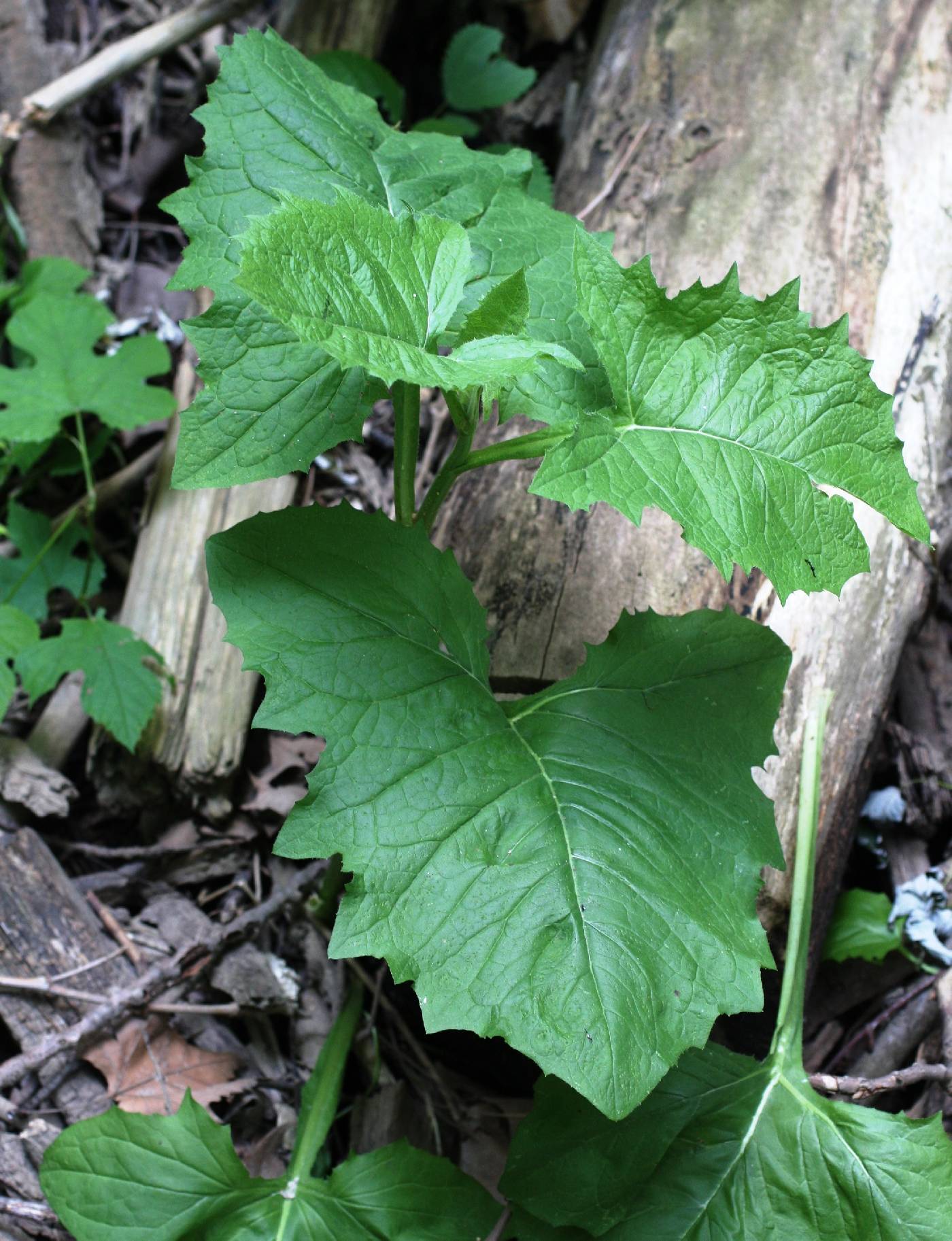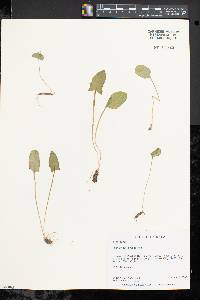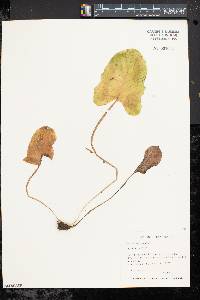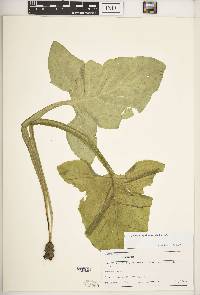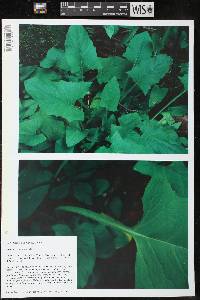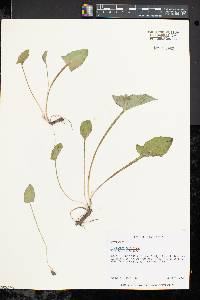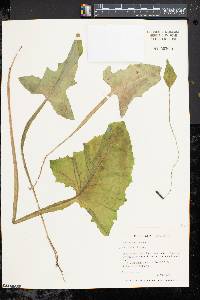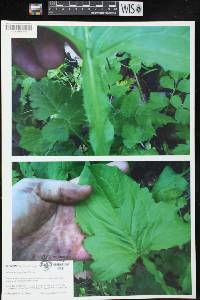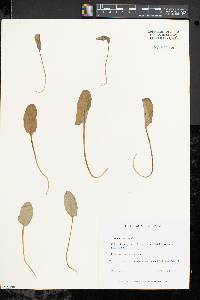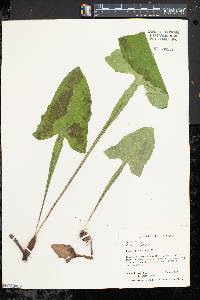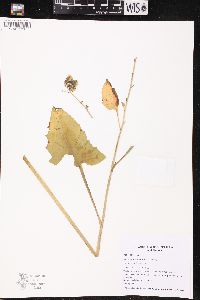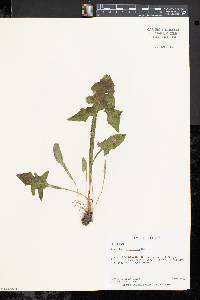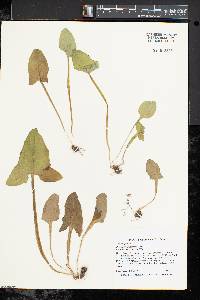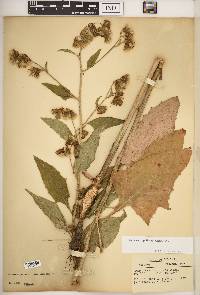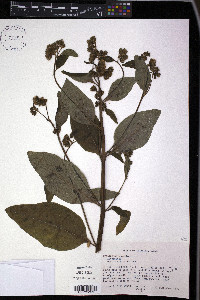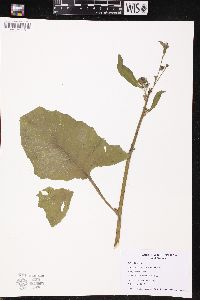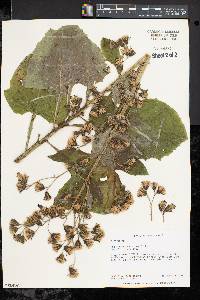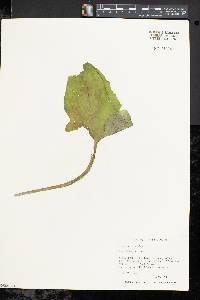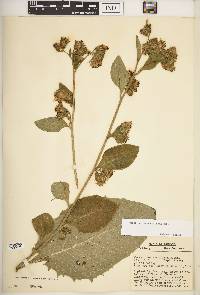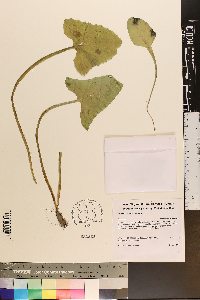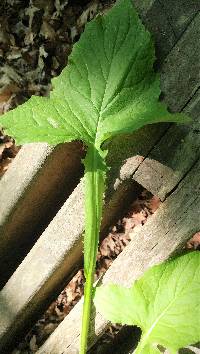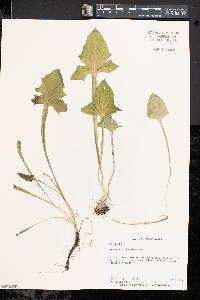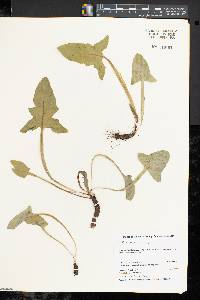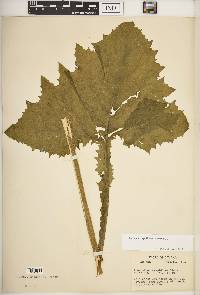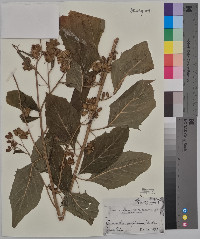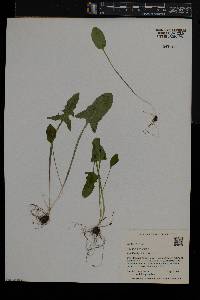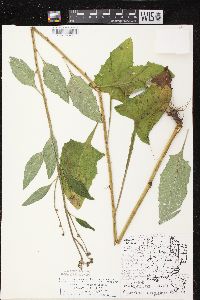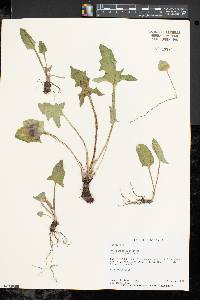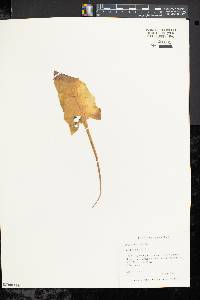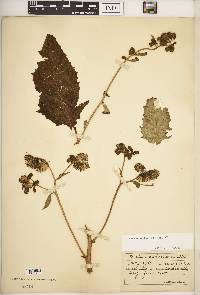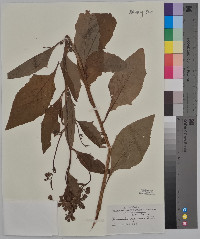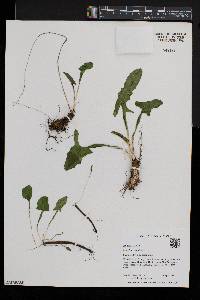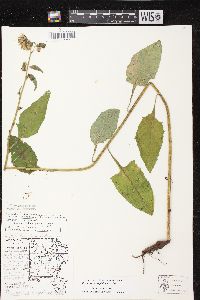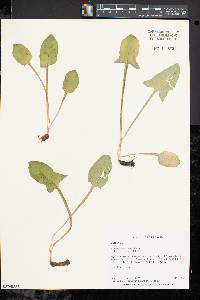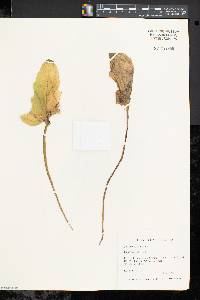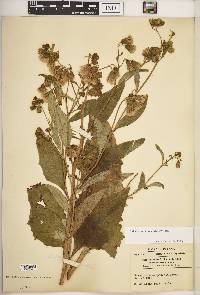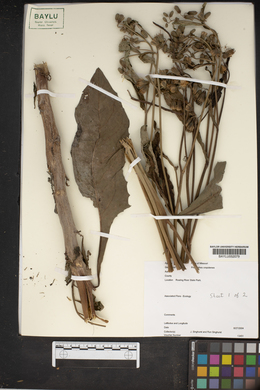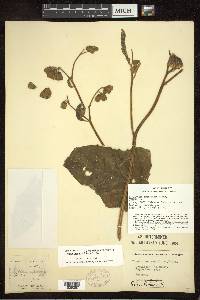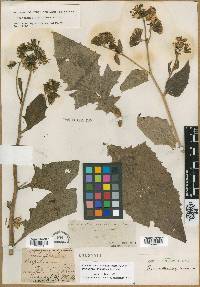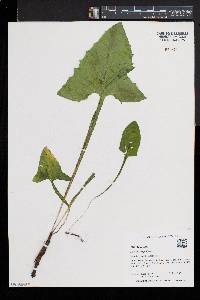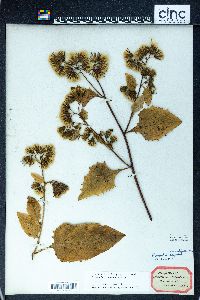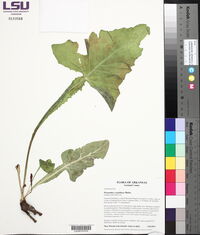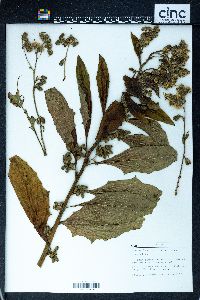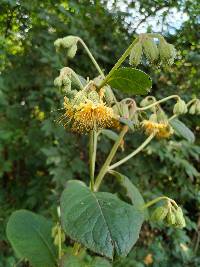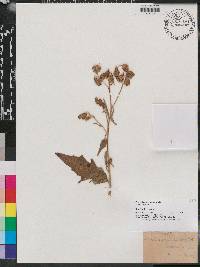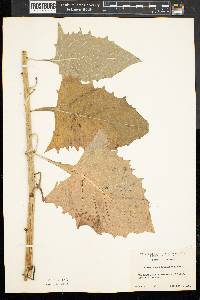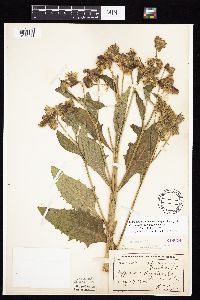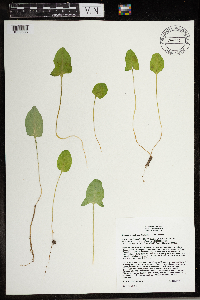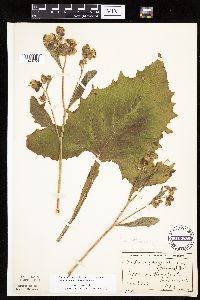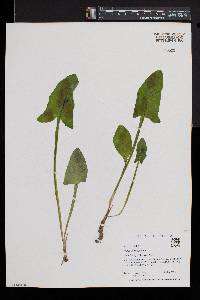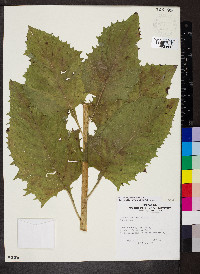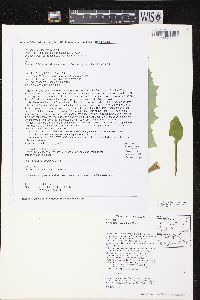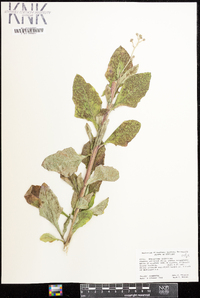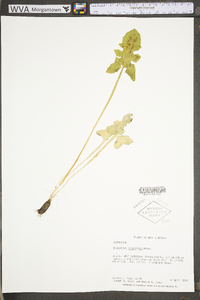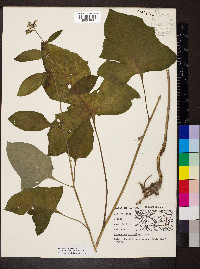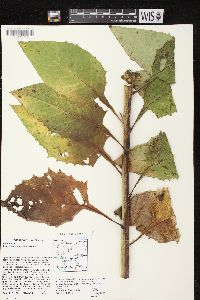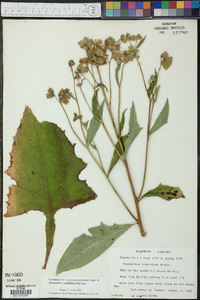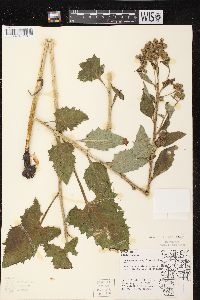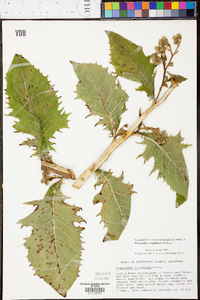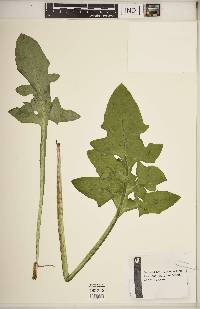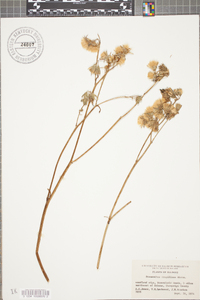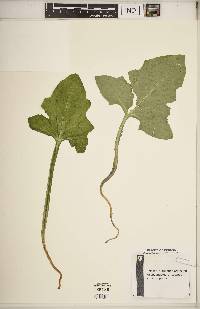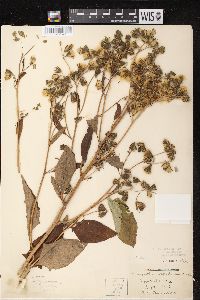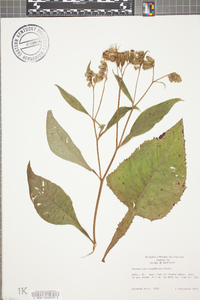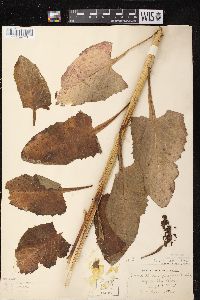Nabalus crepidineus
|
|
|
|
Family: Asteraceae
Nodding Rattlesnake-Root, more...nodding rattlesnakeroot
[Prenanthes crepidinea Michx.] |
Plants 100-300 cm; taproots fusiform, thick and tuberous. Stems erect, green to tan, glabrous proximally, tomentose distally. Leaves: proximal present at flowering; petiolate (petioles winged, 1-13 cm, margins some-times serrate); blades deltate to broadly ovate, 8-23 × 3-14 cm, coriaceous, bases hastate or sagittate, margins entire or coarsely dentate to serrate (teeth often large and remote, faces glabrous or scabrous, hirsute along veins; distal petiolate or sessile, ovate or elliptic, entire. Heads in broad, open, (leafy) paniculiform arrays (branches often elongate, nodding). Calyculi of 18-20 dark green, triangular to lanceolate bractlets 2-5 mm, coarsely setose. Involucres campanulate, 12-16 × 7-14 mm. Phyllaries 9-15, dark green to blackish, lanceolate to elliptic, 10-16 mm, margins scarious, moderately to densely. ± coarsely setose on midribs. Florets 15-38; corollas usually white, sometimes yellow, 9-15 mm. Cypselae golden brown, oblong to linear, subterete to angled, 5-6 mm, unequally 10-12-ribbed; pappi tan, 6-8 mm. 2n = 32 Flowering Aug-Sep. Moist, rich, deciduous woods, lowland or upland woods, thickets, low prairies, wet areas in rich soil; 300. 1200 m; Ark., Del., Ill., Ind., Iowa, Ky., Mich., Minn., Mo., N.Y., Ohio, Pa., Tenn., W.Va., Wis. Prenanthes crepidinea is generally recognized by its tall and robust habit, large deltate or ovate proximal leaves, coarsely dentate margins with relatively large, remote teeth, heads borne in open, paniculiform arrays, dark green or blackish and moderately to densely setose phyllaries, and white or yellow corollas. In some areas P. crepidinea and P. serpentaria overlap in leaf morphology and corolla color, perhaps indicative of past hybridization, and can be difficult to distinguish. Prenanthes serpentaria is generally smaller in stature, has more elongate, pinnately lobed leaves with rounded sinuses, more sparsely setose phyllaries, and yellow or greenish yellow corollas. Prenanthes crepidinea appears to favor moist, bottomland sites, in contrast to the drier and acidic upland habitats preferred by P. serpentaria. Prenanthes crepidinea appears to hybridize with P. aspera in southeastern Missouri (J. A. Steyermark 1963).
Stem 1-2.5 m, glabrous below the somewhat glandular-puberulent or villous-puberulent infl; lvs glabrous or scabrous above, generally short-hirsute at least on the midrib and main veins, most of them petiolate, elliptic to deltoid, cordate, or hastate, coarsely dentate to occasionally shallowly lobed or entire, only gradually reduced upward, the blade to 25 נ20 cm; infl corymbose-paniculiform; heads nodding; invol 12-16 mm, coarsely hirsute-setose, with (10-)12-13(-15) pale green or usually ±black-tinged principal bracts; fls (15-)19-27(-38), ochroleucous; pappus tan or sordid. Moist woods, thickets, and prairies; w. N.Y., w. Pa., and W.Va. to s. Wis., n. Ark., and Ky. Aug., Sept. Gleason, Henry A. & Cronquist, Arthur J. 1991. Manual of vascular plants of northeastern United States and adjacent Canada. lxxv + 910 pp. ©The New York Botanical Garden. All rights reserved. Used by permission. From Flora of Indiana (1940) by Charles C. Deam Very local throughout the state. In addition to the counties shown on the map it has been reported from Carroll, Clark, Fayette, Franklin, Tippecanoe and Wabash Counties. All of my specimens with one exception are from the alluvial banks of streams. I have never seen more than one specimen at a place. …… Indiana Coefficient of Conservatism: C = 7 Wetland Indicator Status: FAC |

